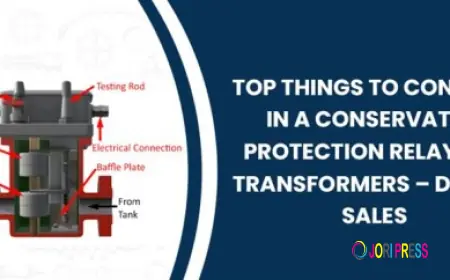Microsoft vs Amazon: Two Corporate Giants, Two Very Different Carbon Removal Strategies
Discover how Microsoft and Amazon are leading the race in carbon removal with very different strategies. Learn about white label carbon credit solutions, Agricultural Carbon Credit Platform Solutions, Tokenized Carbon Credits, Carbon Trading Exchange Software, and the cost to build a carbon credit marketplace shaping the future of climate innovation.

In today’s climate-conscious world, the race toward sustainability has become a defining factor for leading corporations. Among the frontrunners, Microsoft and Amazon stand out not only for their size and influence but also for their distinctly different approaches to carbon removal. Both companies have committed billions of dollars toward climate initiatives, yet their methods, investments, and strategies reveal contrasting visions of the future. While some businesses explore white label carbon credit solutions to enter the sustainability market with flexibility, Microsoft and Amazon are betting on long-term strategies that could shape the global carbon removal industry for decades to come.
Setting the Stage: Why Carbon Removal Matters
Carbon emissions are the primary driver of climate change, and despite advances in renewable energy and efficiency, the world continues to produce more carbon dioxide than nature can absorb. This imbalance highlights the urgent need for carbon removal technologies and platforms.
Unlike carbon reduction (which focuses on cutting future emissions), carbon removal addresses the buildup of existing greenhouse gases. For tech giants like Microsoft and Amazon, investing in this area serves a dual purpose: meeting regulatory and social expectations while positioning themselves as leaders in the trillion-dollar climate economy.
Microsoft’s Approach: Going Beyond Neutrality
Microsoft has taken one of the most aggressive stances in the corporate world. In 2020, it pledged not only to become carbon negative by 2030 but also to remove all the carbon it has emitted since its founding in 1975 by 2050. This bold target positions Microsoft as more than just a participant it aims to lead the carbon removal revolution.
Key strategies include:
-
Massive Carbon Removal Purchases: Microsoft is the single largest buyer of carbon removal credits globally, investing in reforestation, soil sequestration, biochar, and direct air capture technologies.
-
Data-Driven Validation: The company insists on rigorous verification methods to ensure projects are measurable, permanent, and additional.
-
Partnerships with Innovators: Microsoft collaborates with startups that are developing new carbon capture and storage (CCS) technologies, providing them with the financial backing needed to scale.
By creating a transparent, measurable, and science-backed strategy, Microsoft has positioned itself as a corporate leader in climate accountability.
Amazon’s Approach: Scaling Through Logistics and Innovation
Amazon, on the other hand, takes a more ecosystem-driven approach. The e-commerce and cloud giant’s emissions are among the highest in the tech sector, so its strategies are often scrutinized more critically. Through its Climate Pledge, Amazon aims to achieve net-zero carbon by 2040 ten years ahead of the Paris Agreement targets.
Key strategies include:
-
Investment in Renewable Energy: Amazon is the world’s largest corporate buyer of renewable energy, investing heavily in wind and solar projects.
-
Nature-Based Solutions: Unlike Microsoft’s focus on diverse methods, Amazon leans toward large-scale reforestation and regenerative agriculture projects.
-
Logistics Transformation: Amazon is electrifying its delivery fleet and optimizing supply chains to reduce emissions at scale.
Rather than emphasizing removal alone, Amazon integrates carbon strategies across operations and logistics, betting on scale and systemic efficiency.
Diverging Philosophies
While both giants are committed, the divergence lies in philosophy:
-
Microsoft is future-focused, betting heavily on high-tech, verifiable, and permanent solutions.
-
Amazon focuses on scale and immediacy, prioritizing nature-based and operational solutions.
This contrast makes the corporate climate battle a fascinating case study in strategy, risk tolerance, and vision.
The Role of Agricultural Carbon Credit Platform Solutions
Agriculture remains one of the most potent industries for carbon removal due to its potential to sequester carbon in soils and plants. Companies worldwide are developing Agricultural Carbon Credit Platform Solutions that reward farmers for adopting regenerative practices such as cover cropping, no-till farming, and rotational grazing.
-
Microsoft has partnered with agricultural carbon initiatives to validate soil-based sequestration projects.
-
Amazon, through its Climate Pledge Fund, is backing startups building scalable agricultural carbon marketplaces.
These agricultural platforms not only provide credits but also empower farmers with new income streams turning climate action into an economic opportunity.
Tokenized Carbon Credits: A Digital Transformation
One of the most exciting innovations in carbon markets is the Tokenization of Carbon Credits. Tokenization brings transparency, liquidity, and accessibility to the carbon market by recording carbon credits on blockchain networks.
-
Microsoft has shown interest in blockchain-driven carbon registries, ensuring that credits are traceable and preventing double-counting.
-
Amazon Web Services (AWS) is powering startups that offer blockchain-based solutions for tracking and verifying carbon credits, demonstrating Amazon’s indirect involvement.
By leveraging tokenization, both companies see potential in democratizing carbon trading and expanding access for global stakeholders.
Carbon Trading Exchange Software: Enabling Market Growth
As carbon markets expand, Carbon Trading Exchange Software plays a crucial role in ensuring smooth transactions, transparency, and compliance. These platforms allow corporations, governments, and individuals to buy and sell carbon credits with efficiency.
-
Microsoft is experimenting with integrating carbon trading mechanisms into its cloud services, creating digital marketplaces for enterprises.
-
Amazon’s AWS supports startups building exchange platforms, providing cloud infrastructure for scalability.
The inclusion of software-driven exchanges demonstrates how both giants use their core competencies cloud computing and digital services to push climate finance forward.
Lessons for Businesses: Why Strategies Differ
The differences between Microsoft and Amazon’s carbon removal strategies highlight important lessons for businesses:
-
Vision Shapes Investment: Microsoft’s bold pledge to eliminate its historical emissions compels it to support cutting-edge technologies, even if they are costly.
-
Scale vs. Innovation: Amazon focuses on deploying scalable solutions quickly, while Microsoft is investing in breakthrough innovations.
-
Partnerships Drive Progress: Both companies rely on global startups, demonstrating that collaboration fuels progress in carbon removal.
Cost to Build a Carbon Credit Marketplace
For businesses inspired by Microsoft and Amazon, the idea of launching their carbon trading platforms or marketplaces is compelling. However, the cost of building a carbon credit marketplace can vary significantly.
Factors influencing cost include:
-
Platform Type: Centralized vs. decentralized solutions.
-
Integration Features: Smart contracts, tokenization, compliance mechanisms.
-
Technology Stack: Cloud-based infrastructure, blockchain, and AI integration.
-
Regulatory Compliance: Ensuring transparency, fraud prevention, and adherence to local/global laws.
Depending on complexity, costs may range from $150,000 to over $1 million. Many enterprises are turning to ready-made or white-label solutions to reduce expenses and speed up market entry.
The Future Outlook
The battle between Microsoft and Amazon is not just about corporate competition it’s about shaping the very foundation of the global carbon removal industry. With trillions of dollars expected to flow into climate solutions over the coming decades, the strategies adopted today will determine who leads tomorrow.
-
If Microsoft’s high-tech bets succeed, it could set new standards for permanence and verifiability.
-
If Amazon’s scale-driven approach delivers quick results, it could become the blueprint for corporate climate action worldwide.
Either way, both companies are paving the way for innovation, accountability, and growth in the carbon removal space.
Conclusion
Microsoft and Amazon may be tackling carbon removal from very different angles, but both approaches highlight the urgency and opportunity within the carbon economy. Their strategies also open doors for other enterprises to engage with sustainability through white label carbon credit platforms, Agricultural Carbon Credit Platform Solutions, Tokenized Carbon Credits, Carbon Trading Exchange Software, and more.
As businesses explore these options, the key will be aligning climate goals with operational models while balancing costs and scalability. The corporate climate race is far from over but the innovations spurred by these giants will have ripple effects across industries for decades to come.
What's Your Reaction?
 Like
0
Like
0
 Dislike
0
Dislike
0
 Love
0
Love
0
 Funny
0
Funny
0
 Angry
0
Angry
0
 Sad
0
Sad
0
 Wow
0
Wow
0


















































